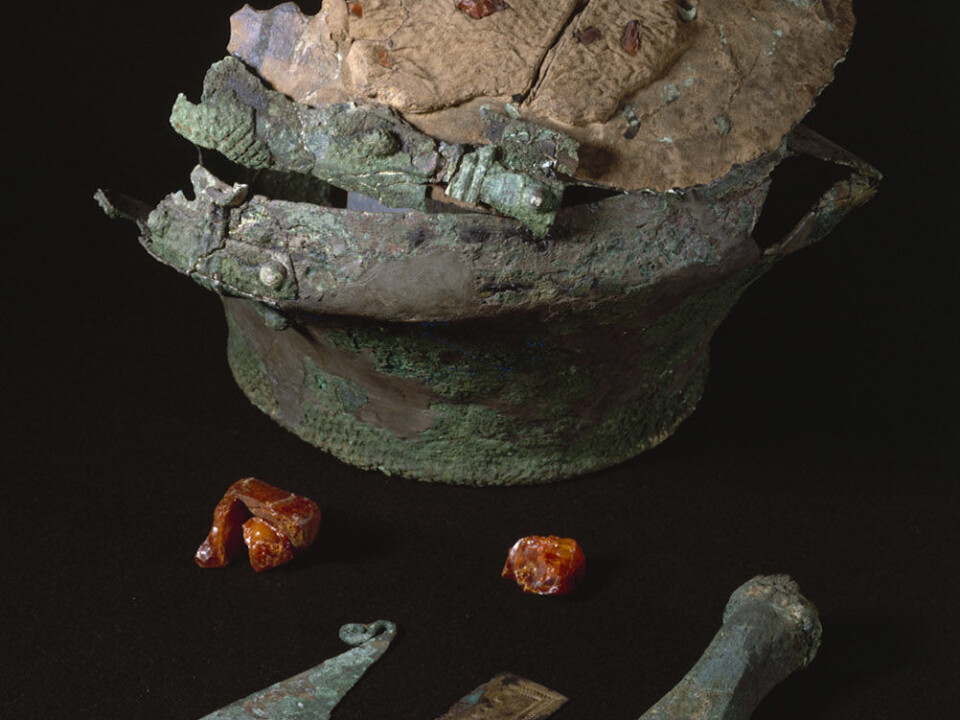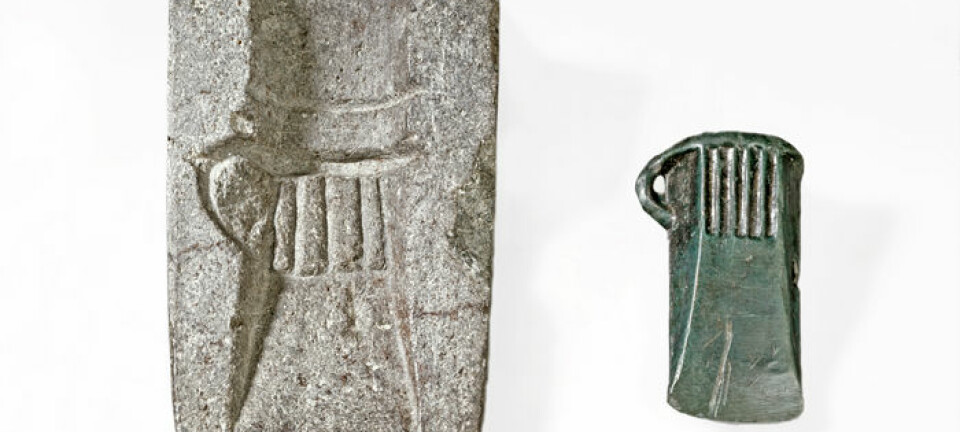
Ancient piece of fabric from surprising source
The people who made clothes of plant fibres 2,800 years ago didn’t limit themselves to using agricultural plants. Researchers think they were conscious users of wild plants too.
Denne artikkelen er over ti år gammel og kan inneholde utdatert informasjon.
In 1861, archaeology enthusiast King Frederick VII led an excavation of the mighty Lusehøj barrow on Southwest Funen in Denmark.
The excavation turned up dazzling bronze objects which enriched the king’s collection, but he also secured a fragment of a few centimetres of woven cloth.
The cloth had been wrapped around the cremated remains of a corpse and placed in a bronze urn.
The burial mound was most certainly built for a wealthy and powerful person.

But what about the bits of fabric?
Recent analyses gave surprising information about fabric production in Bronze Age Europe.
Made of nettles
Until recently it was assumed that the piece of cloth from Lusehøj was linen, made of cultivated flax.
New studies using polarised light microscope techniques and isotope analyses show the fabric to be woven from nettle fibres, probably stemming from Austria.

This means that wild plants, not just local but imported ones too, probably played a bigger part in clothes production than previously thought.
The researchers report their surprising discovery in the journal Scientific Reports.
New view of early agriculture
It was widely presumed that production of plant fibre textiles in ancient Europe, especially woven textiles for clothing, was closely linked to the development of agriculture.
In other words, locally-grown plants were used − especially flax and hemp.

“The Lusehøj cloth, the oldest piece of woven fabric in Northern Europe, challenges this assumption by demonstrating an intentional use of wild plant fibres,” says Bodil Holst, a professor in nanophysics at the University of Bergen.
“Because the fabric was found in a grave rich in treasures, it’s unlikely that nettles were chosen as a substandard substitution for linen, which was also available and which we have assumed to be finer. Nettles must have been chosen intentionally,” she says.
Wild plants, imports and local production
Danish archaeologists and Norwegian physicists have cooperated in this study.
“In this instance the archaeologists think someone must have transported the fabric from Austria to Denmark.”
“In other circumstances there could have been trade imports of various fabric fibres among regions at this time and textile production was thus not wholly based on locally-grown plants,” says Holst.
The analyses showing Austria to be the origin of the nettles really surprised her co-author, archaeologist Ulla Mannering of the National Museum in Denmark. She’s a specialist in Northern European textiles and clothing.
“Presently we have no documentation of textiles made from nettles being produced in Denmark during the Bronze Age,” she writes in a press release.
Neither archaeologists, physicists nor others can come up with a clear answer to why a shroud made from nettles was wrapped around the remains of the person in the Lusehøj grave.
Better utilisation of resources?
“Without knowing the exact reason why it was chosen, this at least indicates that wild plants played an important role. It’s imaginable that it held ritual significance and in Denmark nestle cloth has been said to be a fine fabric,” says the professor.
“But this could actually have been a wish to exploit available natural resources better. Perhaps people searched for other plant fibres that worked well as clothes.”
A future step for Holst will be to investigate whether nettles make a cloth with superior thermal qualities, whether the plant known for its sting insulates better than fibres from cultivated plants.
-------------------------------
Read the Norwegian version of this article at forskning.no
Translated by: Glenn Ostling

































